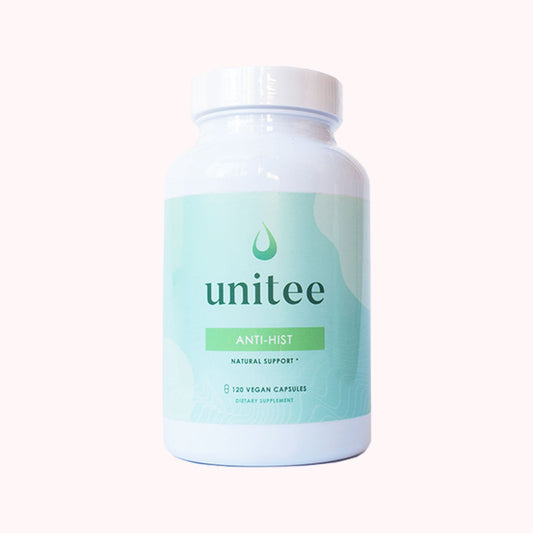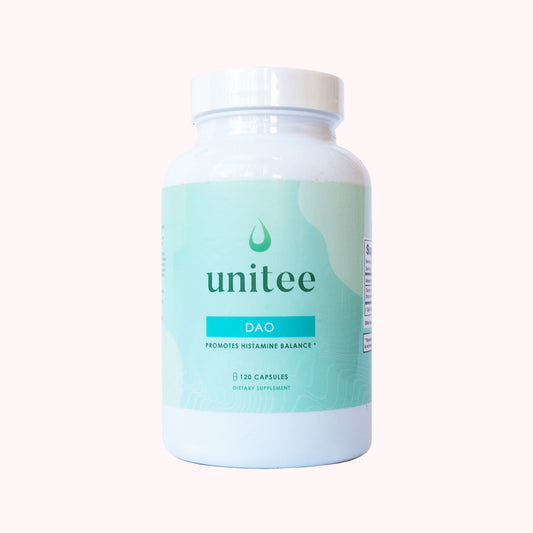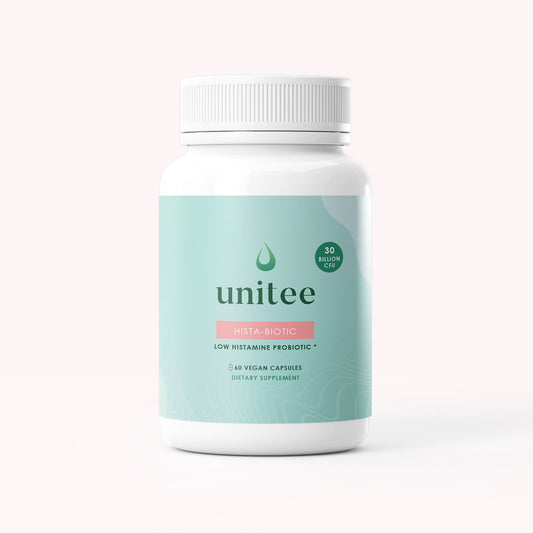Following a low histamine diet is tough. Not only is it quite restrictive, it can be downright confusing!
There’s also the simple fact that some people tolerate more histamine in their food than others. So, looking up information online can cause even more uncertainty when it comes to what you’re led to believe you’re able to eat.
Because of the inconsistency in the available evidence about how to correctly follow a low histamine diet, one of the questions my team and I get quite often is about the humble lentil and its histamine content. When we look at other sources, it seems there’s no clear answer as to whether they should be part of a low histamine diet or not. So, are lentils low histamine?
That’s where I come in. As a trusted source of all things histamine intolerance, I’m here to give you the evidence, and answer the common question: are lentils low histamine? With this information, you’ll be able to make the most informed decision about whether they’re a good source of nutrition for you as you navigate your low histamine diet.
Lentils and Their Histamine Content Explained
Fact: lentils are considered a low histamine food (1). Yay!
But of course, it’s never that simple, is it?
While the evidence generally supports the fact that lentils contain very little histamine, sometimes they will contain more histamine and sometimes less. Their histamine content depends on how the lentils are processed and how they are stored.
If they are not dried enough, and stored in humid conditions, it may cause their histamine content to increase. The rise in histamine content of the lentils is not as a result of an increase in production within the lentils themselves, rather, it’s due to the increased susceptibility to bacteria and mold flourishing within this warm and moist environment.
As you may well know, bacteria themselves can be histamine-producing, and mold exposure triggers an immune system response that causes the body to release histamine from mast cells. Mold spores are seen as a threat, so the body sends its inflammatory chemicals and histamine molecules flooding out to neutralize it.
There’s another reason lentils may not be well tolerated by some of you following a low histamine diet.
Lentils Histamine Is Low, but Lentils Lectin Is Not!
Some of you may have heard about lectins before. For those of you who haven’t, it’s basically a type of protein most commonly associated with being a significant compound found in nuts and legumes, like lentils (2). In some susceptible people, this protein can be quite bothersome (3).
In those of you living with histamine intolerance, it may cause an immune response that triggers the release of histamine from your mast cells. And it’s this immune response that causes those allergic-like symptoms to show up, despite lentils themselves being low in histamine.
There’s also another factor to consider when it comes to eating lentils when you have histamine intolerance: oxalates (4).
Many people with histamine intolerance also have trouble with this food compound, which causes widespread body pain along with the other symptoms of histamine intolerance you may experience when histamine release is triggered.
Fortunately, there is something you can do about both the lectin and oxalate content of lentils histamine should you wish to continue to keep them in your low histamine diet.
Prepare Your Lentils Like This to Keep Them From Causing Symptoms of Histamine Intolerance
If you find yourself reacting to lentils while following a low histamine diet, it may be as a result of the lectin or oxalate content. But it truly is worth testing whether this cooking method helps to reduce those reactions. After all, lentils are low in histamine and are a nutritious source of many vitamins and minerals, such as B vitamins and iron. They’re also a great source of fiber, which you know is important in the diet to help support the health of your digestive system. Just ½ a cup of lentils provides a whopping 8 grams, which is ⅓ of your daily need! Fiber not only keeps you regular, but can support the growth of good bacteria in the gut, which is often something those with histamine struggle with.
Ok, so how do you make lentils more tolerable? Well, it’s fairly simple, really: you soak them and boil them for a long time (5)!
I often tell my clients to put them in a pot or bowl, cover them with fresh water to about an inch higher than the lentils, and leave them to soak away overnight. In the morning, rinse them and replace them with fresh water, then leave them to soak again throughout the day. At dinner time, discard the water and rinse them thoroughly once more, put them in a pot and boil on low-medium heat for at least 10 minutes. If you have a little longer, allow them to go for 30 minutes to really soften and break down those lectins and leach the oxalates from them.
Now that you know how to keep lentils low histamine and less bothersome if you have other sensitivities to lectins and oxalates, let’s talk about the best ways to use them!
Three Yummy Ways to Include Low Histamine Lentils in Your Diet
On first appearance, lentils may seem a little boring and bland. But they can be used in many different ways, from breakfast to dinner and anything in between. Here are three of my favourite ways to include lentils in a low histamine food plan.
1. Lentils offer a sweet or savory fiber hit at breakfast
Breakfast is often a tough meal for those of us living with histamine intolerance. But no more with your soaked low histamine lentils!
Not only can you make a delicious lentil scramble or hash with poached eggs, you can also make a sweet high-fiber option by simply adding coconut milk, a little maple syrup, some chopped macadamia nuts and your favourite fruit.
2. Bulk up lunchtime soups or stews
Soups and stews are a great way to meal prep when you have histamine intolerance. You can make an entire week’s worth of meals, freezing the portions and thawing them as needed. But these meals often lack fiber and protein. Lentils histamine provide both, which means they’ll bulk up the meal and leave you feeling full and satisfied.
3. Lentils are a versatile dinner side
If you’d like to move away from using more simple carbs at dinner, like rice, you can pack a fiber punch by using lentils in many different ways. You can add low histamine herbs and vegetables to make a ragout, and you can blend them with boiled parsnips for a sweet ‘mash’, or combine them with cooked and cooled quinoa, some cooked and cooled roasted vegetables, plus any herbs and spices you like for a healthy lentil salad that won’t tip your histamine scales!
So, Are Lentils Low Histamine? Final Thoughts
As you can see, lentils are low histamine when prepared correctly and can be a great source of nutrition when it comes to low histamine eating. Of course, cooking them correctly makes them even more tolerable for those of you who may have additional sensitivities.
If you’ve reacted to lentils before, try my method of soaking twice and boiling once to see if this helps. The best way to determine whether you’ll react is to have a small portion - such as 2 tablespoons of plain, unaltered lentils - between a meal and then track your symptoms. If your symptoms don’t flare, you can happily add lentils to one of your everyday meals.
Remember, if you’re cooking your lentils in advance, be sure to cool them in the fridge and freeze any leftover portions to reduce the risk of rising histamines. Defrost your portions as needed, and use them in the very next meal.
I hope you start to enjoy lentils as much as I do! And have some fun playing around with their flavour. They offer such potential for a variety of ways they can be included into your diet.
References:
- Abu Risha, M., Rick, EM., Plum, M. et al. Legume Allergens Pea, Chickpea, Lentil, Lupine and Beyond. Curr Allergy Asthma Rep 24, 527–548 (2024). https://doi.org/10.1007/s11882-024-01165-7
- Faris, Mo’ez Al-Islam Ezzat, Takruri, Hamed Rabah, and Issa, Ala Yousef. ‘Role of Lentils (Lens Culinaris L.) in Human Health and Nutrition: a Review’. 1 Jan. 2013 : 3 – 16.
- Freed DL. Do dietary lectins cause disease?. BMJ. 1999;318(7190):1023-1024. doi:10.1136/bmj.318.7190.1023
- Chai, W., & Liebman, M. (2005). Oxalate content of legumes, nuts, and grain-based flours. Journal of Food Composition and Analysis, 18(7), 723–729. doi:10.1016/j.jfca.2004.07.001
- Shi, L., Arntfield, S. D., & Nickerson, M. (2018). Changes in levels of phytic acid, lectins and oxalates during soaking and cooking of Canadian pulses. Food Research International, 107, 660–668.

Anita Tee
My name is Anita Tee. I'm a nutritional scientist who specializes in histamine intolerance. I hold a Master of Science in Personalized Nutrition and a Bachelor of Science in Human Biology and Psychology.
For the past ten years, I have used my experience in nutritional and medical health sciences to create a scientifically backed, natural approach to healthcare that relies 100% on evidence-based research.
As I previously suffered from - and overcame - histamine intolerance, my focus is to increase recognition and expand the available resources and protocols available for resolving this particular disorder. To date, I have helped over 4,000 individuals fully resolve or better manage their histamine intolerance symptoms.







